Are you debating your classroom layout and planning your classroom seating arrangements to head back to school? Or maybe you’re looking to rearrange your seating plan after a few months of all the pupils sitting in one place. Either way, there’s always a LOT to think about. Should you arrange pupils at tables? Separate them in rows? What about flexible seating? Is it a trend you should avoid or jump right in on?
How will your classroom seating arrangements affect pupils’ learning, and what do you do with your seating chart when a new child moves in and changes the number of pupils in your room?
Take a breath! The teachers on the Teach Starter team have looked at some of the science behind seating arrangements and popular pupil seating set-ups. Read on for suggestions for setting up your classroom desks, tables and more!
How Does Seating Arrangement Affect Learning?
At the end of the day, this is the question teachers always ask, isn’t it? Will moving little Isla or little Muhammed’s seats improve learning outcomes?
As you know, seating arrangements in the classroom are about more than choosing a style that looks aesthetically pleasing or even picking one that works with the size of your class list and the size of your classroom. Studies have shown that where a child sits in class can affect everything from their motivation to their class participation, as well as their relationship with you as a teacher, relationships with classmates and — of course — learning.
How you set up your classroom desks can also affect your own pedagogy. Thinking of setting up stadium-style seating? You may not mean it, but the studies show you might spend more time lecturing to your pupils with less involvement from them. Thinking of a roundtable-type seating arrangement? The opposite is likely to be true — your pupils will likely be more actively involved, and your classroom learning environment will be more pupil-led.
So how do you choose? We’ve put together some seating arrangements to consider in your classroom — from pods to the increasingly popular flexible seating — along with how they might work (or not) for you.
Classroom Seating Arrangement Ideas
Before you plan out your classroom layout, it’s important to review any pupil EHCPs. Does anyone in your class have stipulations about where they should be seated for the best learning environment?
Preferential Seating
Preferential seating accommodations are made to give pupils with specific needs the ability to see, hear and participate in classroom activities in the same ways as their peers who don’t have disabilities. A child who has a hearing disability, for example, might be required to sit nearer the teacher to be able to hear what’s being said, while a child who is easily distracted might need a spot out of the line of sight of the classroom door.
It’s also wise to consider the needs of pupils who do not have EHCPs when planning your seating. A child with glasses, for example, may not have an official plan, but you may realize they really need a seat closer to the front of the classroom.
Likewise, there may be pupil who really should not be seated near one another, whether it’s because they’re too likely to talk or simply do not get along. If your class is brand-new to you, these are things you’ll find out as the school year progresses — don’t be afraid to change your seating arrangement!
How to Make a Seating Chart for a Classroom
Once you’ve taken pupils’ individual needs into consideration, how do you actually make a seating chart for your classroom?
Here are some pros and cons to eight different classroom desk arrangement ideas that have been tried and tested by teachers in the know that may help! Obviously, there are a number of factors that will influence the seating arrangement that will work in your classroom. The main struggle is, of course, considering the size of the classroom, number of pupils and the furniture you have.
This list has something for every teacher and every classroom … we hope!
Grouping
Grouping of pupil desks in a variety of numbered groups is often known as seating pupils in ‘pods’.
This setup, of course, lends itself well to a classroom that does a lot of group work and collaboration. Also, if you are a teacher who finds the competition of ‘group points’ works well to keep your pupils on task, this layout is a winner!
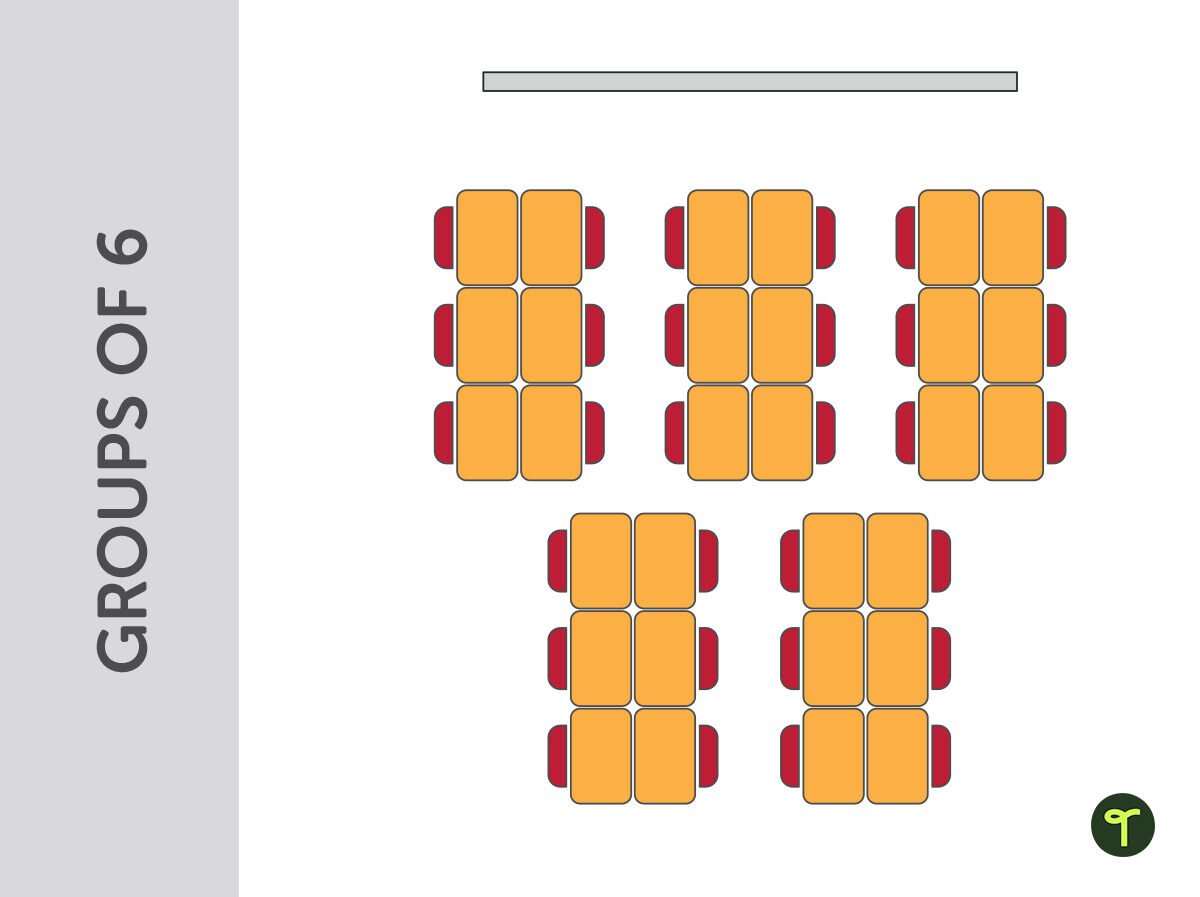
Cons to ‘pods’ desk configuration include:
- Desks move around easily
- Can be distracting for some
- Some pupils will have to shift to see the whiteboard
Mini U’s
This layout offers you the benefits of easily managing small group work without pupils being squashed together and means they have a bit more personal space.
You can easily go around and check work and check in on individual pupils, and you might position your chair in the middle of one of the ‘U’ shapes to have small discussions with each group when needed.
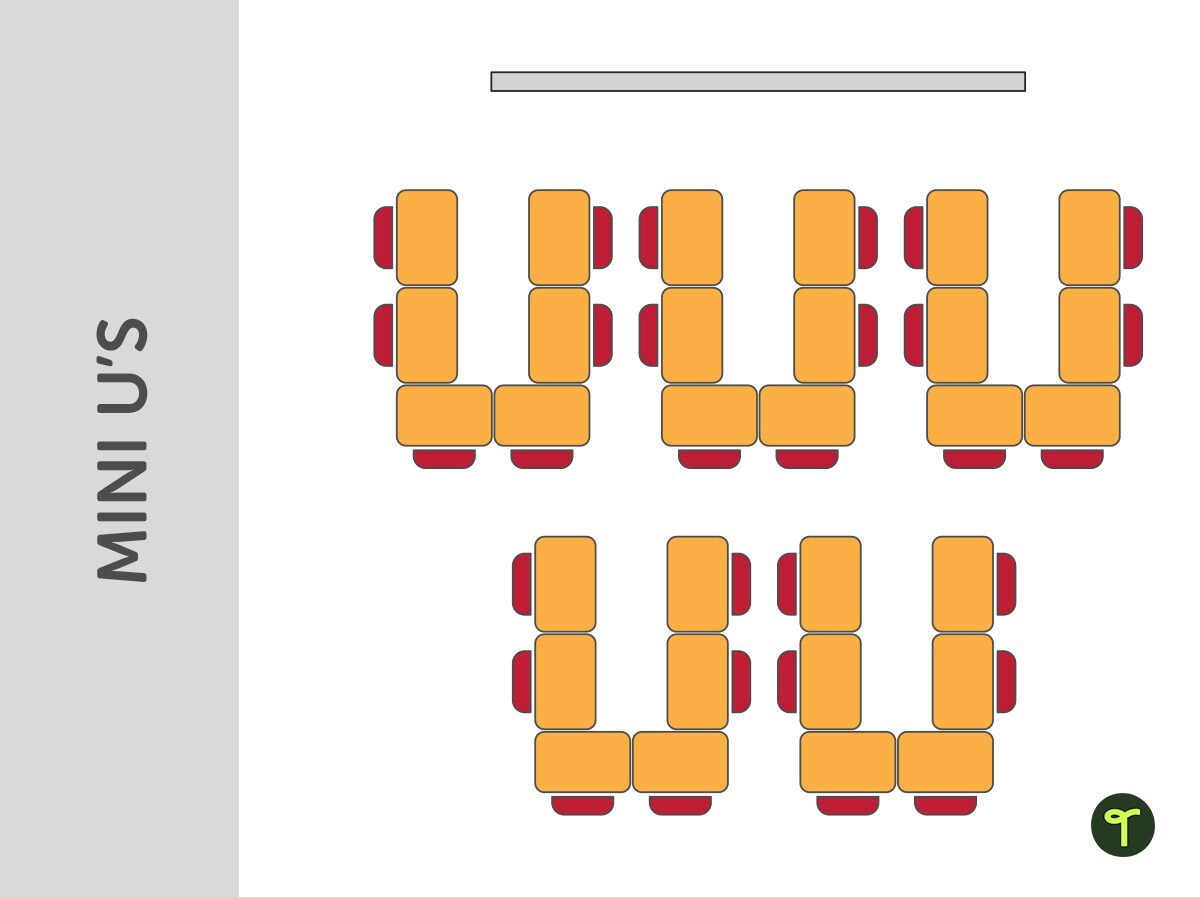
Again, a con to this set-up would be you will have some pupils not ‘facing’ the whiteboard. Others who are facing the whiteboard, however, may have other pupils’ heads in the way of their viewing of the whiteboard.
Flexible Seating
Teachers either love flexible seating, or they don’t. Flexible seating gurus say that this form of classroom ‘un-seating’ better reflects the hyper-connected and ever-changing world we live in and inherently requires pupils to master skills such as flexibility, creativity, problem-solving and collaboration.
Its success truly depends on the pupils in your class and what works best for them.
This kind of seating arrangement is an absolute classroom change. If you are thinking of changing to flexible seating, it may be an idea to have a bit of a trial period to see if this sort of layout will work for your class. Have one ‘different’ flexible seating option available and see if it’s something your pupils will be able to cope with and if it will improve their learning environment.
Simple Rows
The traditional desk in rows is still an option, especially if you do a lot of board work.
Obviously, this layout doesn’t cater very well to small group/collaborative learning. However, if you have space in your classroom, you may be able to set up a variety of other group work areas in the classroom and save the desks for individual work. All pupils in this desk layout will face the board, and it lends itself to easily moving the desks to cater to test conditions if required.
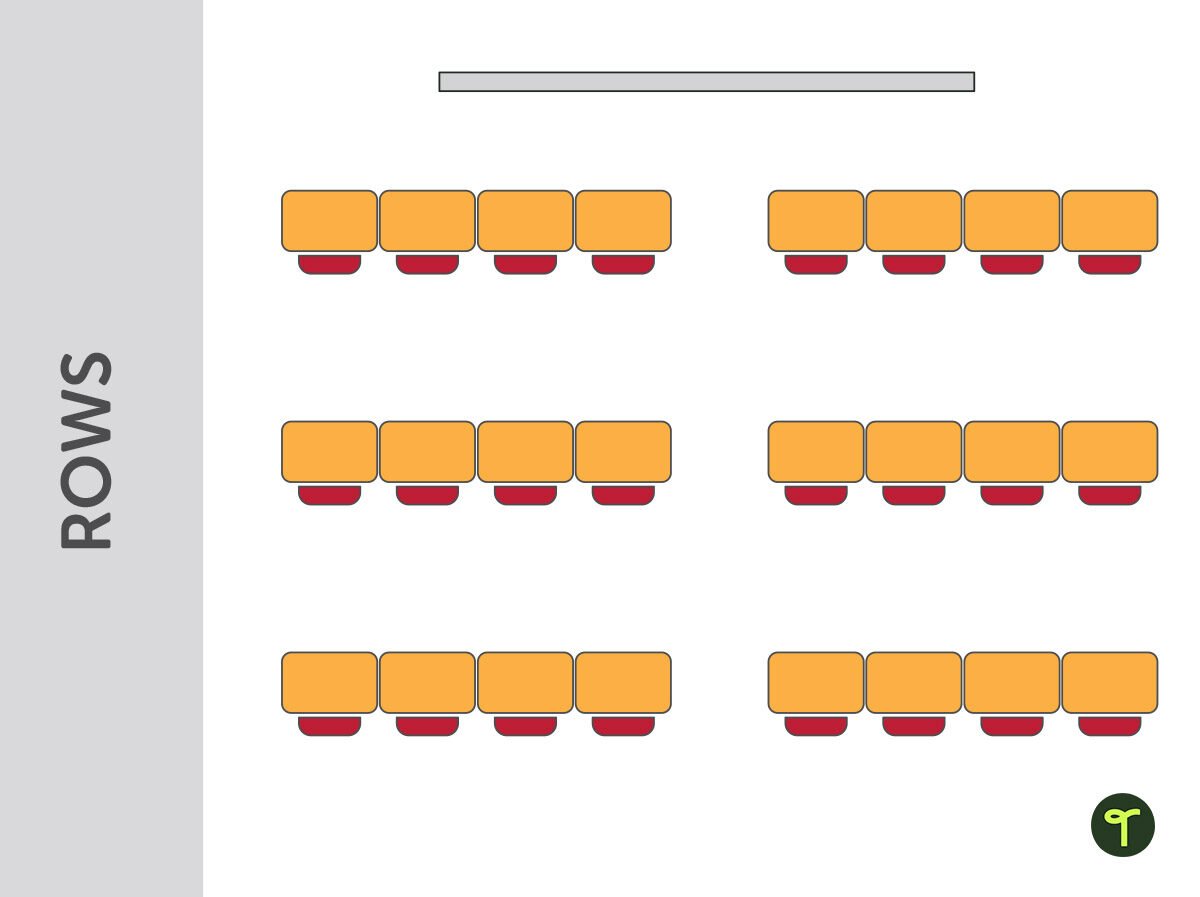
When the desks are in rows, it is often easier for the teacher to see who is on task as well. However, if you do have a lot of pupils in your class, this layout could leave some children a fair way away from the whiteboard and the front of the class.
Mix it Up
In a classroom of 26 pupils or more, there will be a variety of learning styles and learning requirements. One way to combat this is to mix up the desk arrangement and try to cater to a variety of learning styles and needs.
Another classroom management technique using this desk configuration is to not have ‘set’ desks.
A bit like flexible seating, pupils can move around to the desk configuration that is going to work for them for different subject areas. This may be more teacher-directed than pupil-directed. If you have a small group of pupils who need a lot of teacher assistance for one subject area, you can have them to sit in a desk arrangement such as the small U shape and position yourself in the middle of the U.
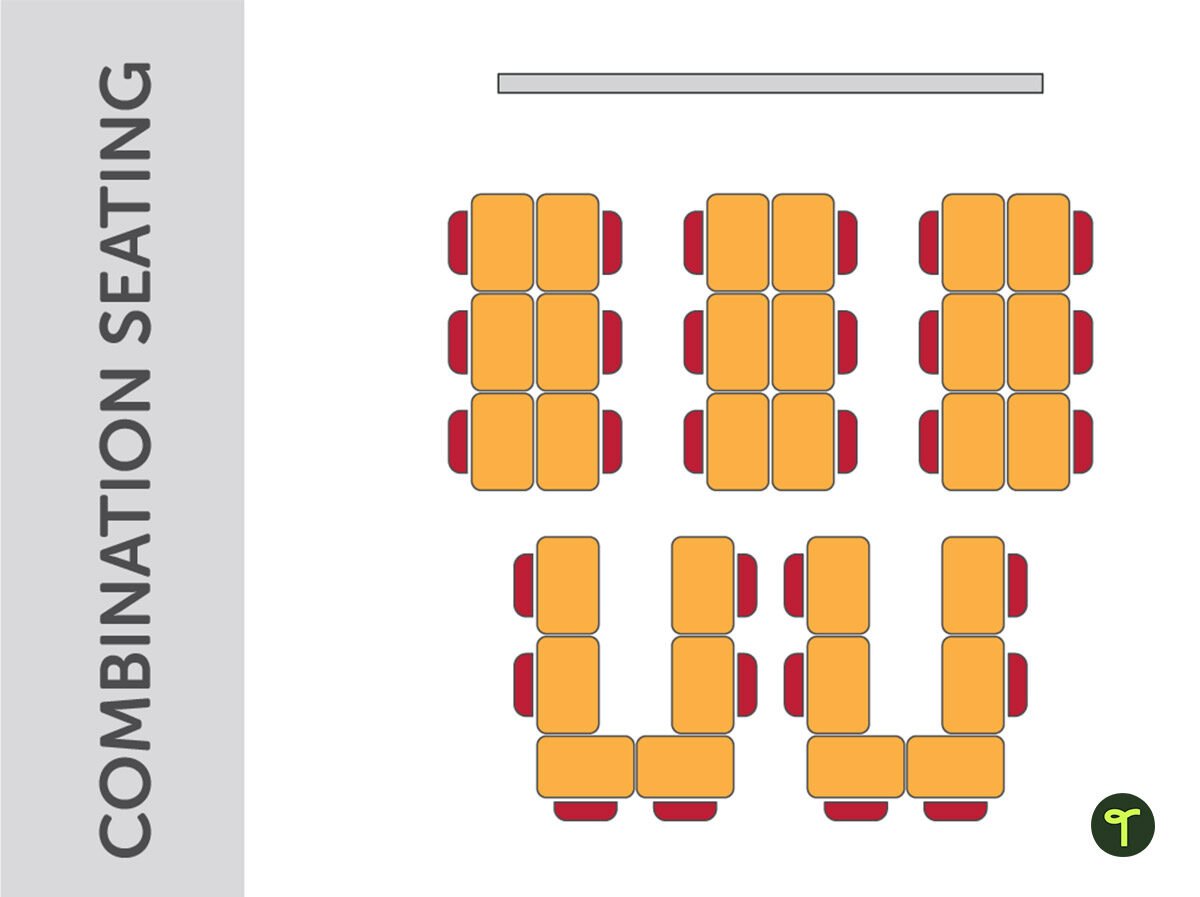
The obvious con of this arrangement is that pupils may not like sitting in a different configuration from their peers. Also, can you cater to every child’s learning needs?
Stadium Seating
A slight deviation to the desks in rows, stadium-like seating is another option that may work, particularly for older primary pupils. This classroom seating plan again makes it easier for the teacher to see if all pupils are on task as the desks are angled to one point in the classroom. This layout also uses less floor space and, as we know, some classrooms are very, very small.
The more floor space you can get, the better!
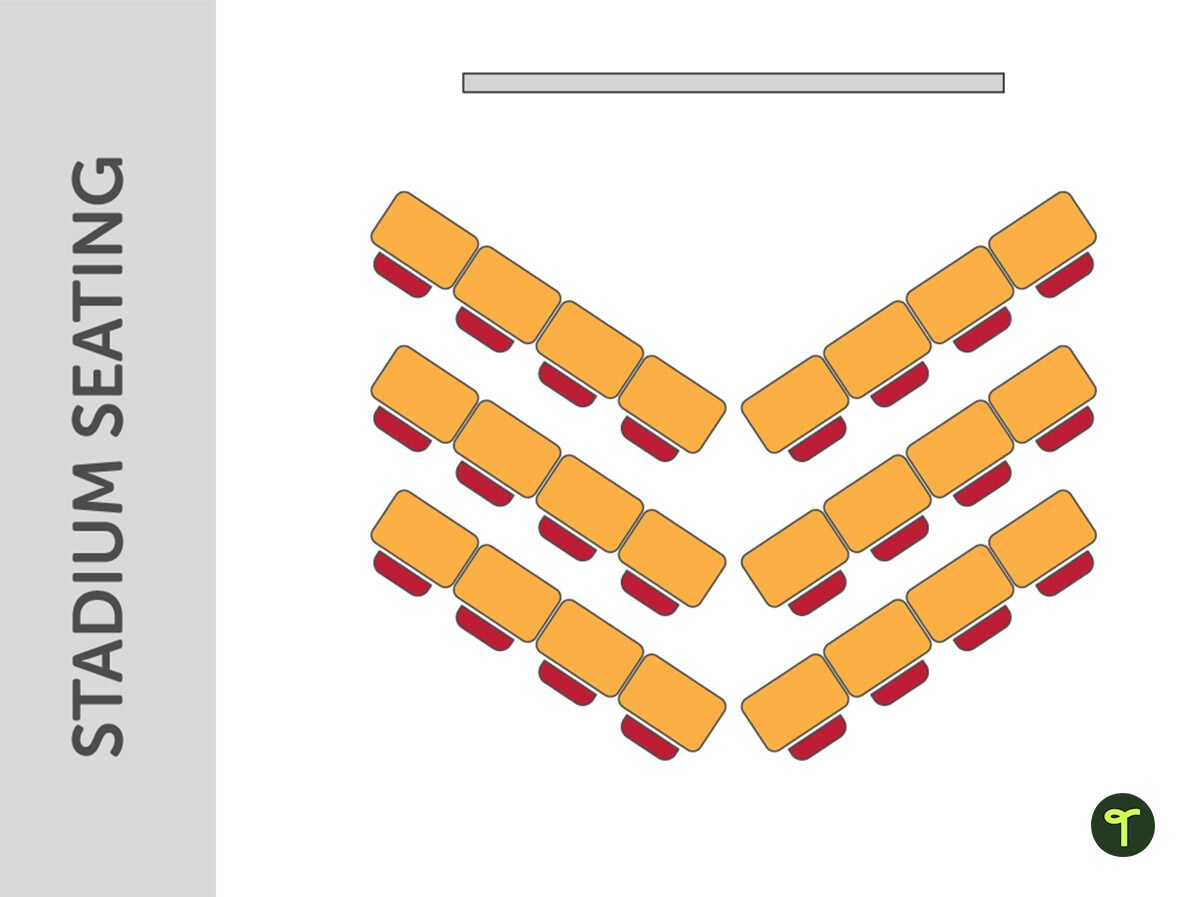
This layout won’t suit a classroom that does involve a lot of group work/collaboration, and it can often turn the teacher into a lecturer.
Large U Shapes
This desk arrangement concept was another one of my favorite layouts for the classroom. This classroom seating layout caters well to whole-class discussions and enables pupils the ability to easily see their classmates and interact with them during discussions.
This layout is similar to the small u-shapes in that each desk is easily accessible by the classroom teacher. This layout doesn’t work well for small group work, but pupils can still work in pairs with the person beside them if required.
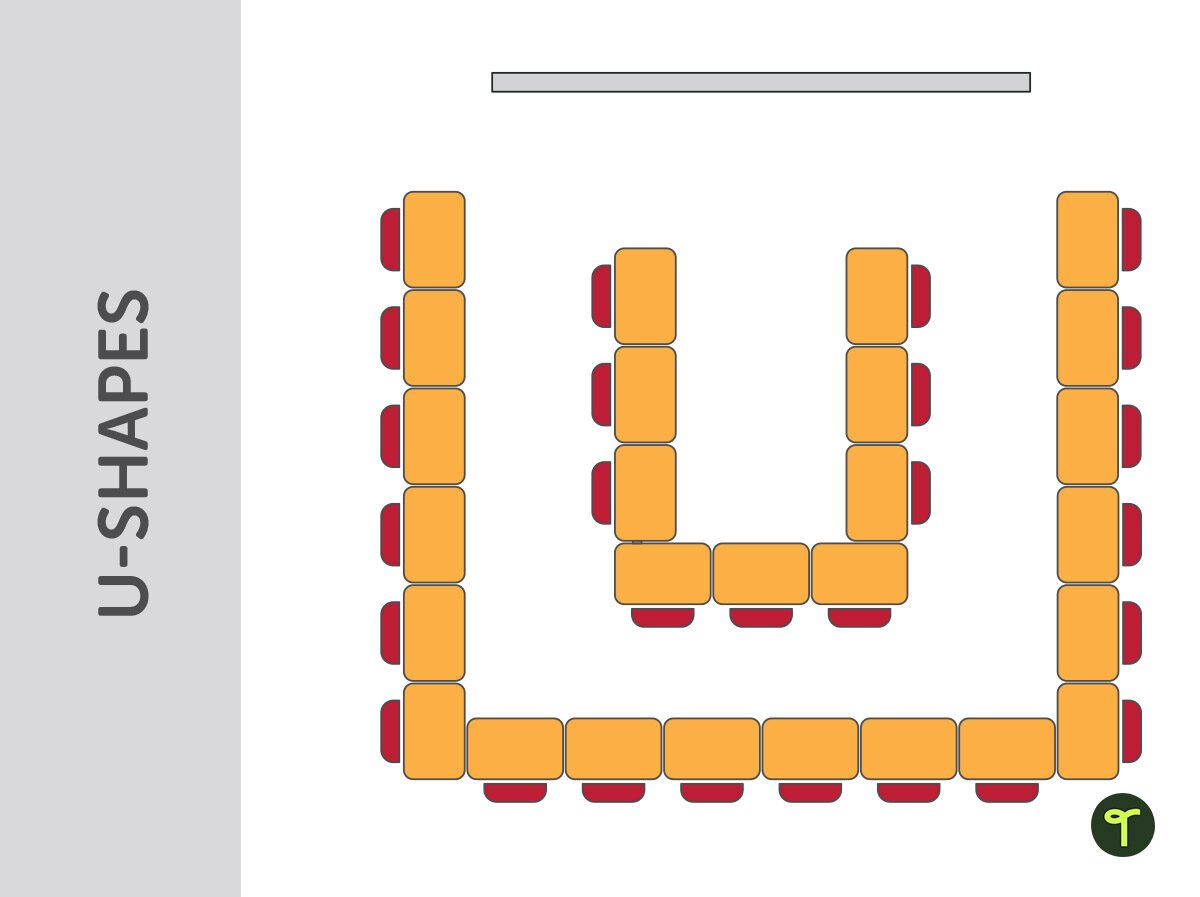
Double E
If you are struggling with a small classroom, this Double E shape may just be the desk layout that will work for you. This desk configuration creates two smaller carpet areas in the middle of the desks, which would provide some space for small group work as well.
Again, this layout makes it easier for the teacher to get around and help out individual pupils. This layout also allows for a little flexibility in that if you have particular pupils that really need to face the whiteboard, you can make sure they are facing the front of the classroom.
What Is the Best Seating Arrangement for a Classroom?
Now that we’ve covered a variety of seating plans, which is the best seating arrangement for the classroom? The research tells us there is no one ‘right’ seating plan or chart that you must consider in your classroom layout.
In a 2008 seating study published in the journal of the National Association for Special Educational Needs (NASEN), researchers concluded, “There is no single classroom seating arrangement that promotes positive behavioural and academic outcomes for all tasks, because the available research clearly indicates that the nature of the task should dictate the arrangement.”
In other words — you need not stress! The best arrangement is truly the one that works best for you — the teacher — and your pupils.
Explore classroom management tools to save your time and keep your classroom running smoothly. Or, have a look at Tes Class Charts – our classroom management software, which can help you build seating plans in seconds.
Banner image via Shutterstock/NickBerryPhotography

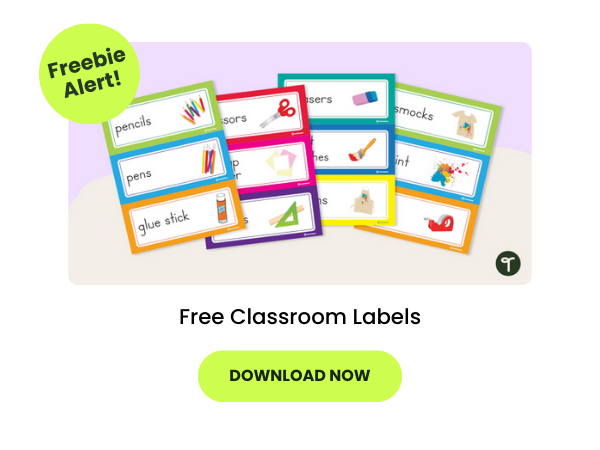







I use a variation on rows that allows for collaborative working in 2s, 3s or as a whole group of six. ???? ◾️◾️◾️◾️ ?◾️◾️?
Thanks for your comment, Jane! I often used a variation of these desk layout ideas in my classrooms too!